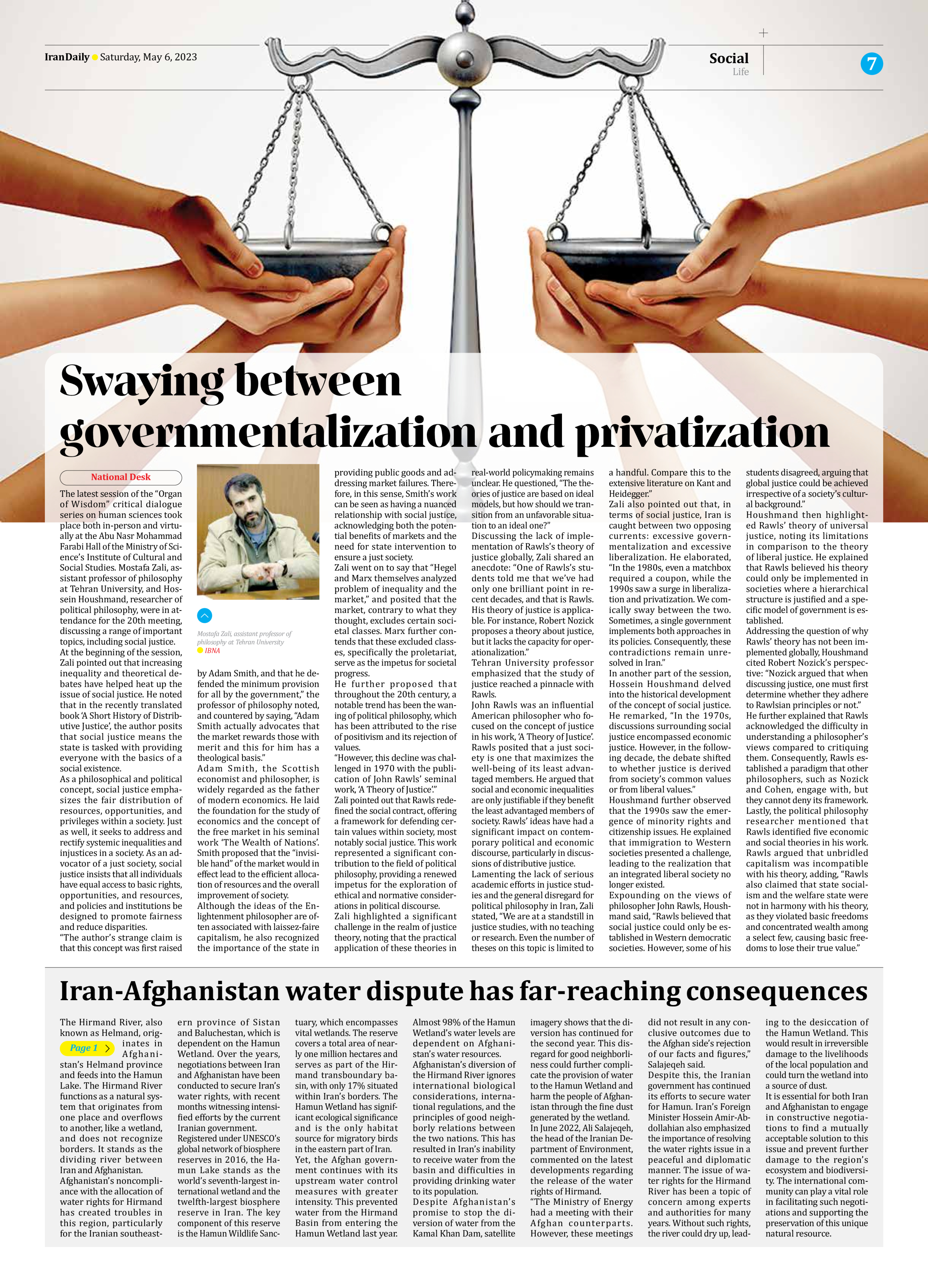
Iran-Afghanistan water dispute has far-reaching consequences
Page 1
The Hirmand River, also known as Helmand, originates in Afghanistan’s Helmand province and feeds into the Hamun Lake. The Hirmand River functions as a natural system that originates from one place and overflows to another, like a wetland, and does not recognize borders. It stands as the dividing river between Iran and Afghanistan.
Afghanistan’s noncompliance with the allocation of water rights for Hirmand has created troubles in this region, particularly for the Iranian southeastern province of Sistan and Baluchestan, which is dependent on the Hamun Wetland. Over the years, negotiations between Iran and Afghanistan have been conducted to secure Iran’s water rights, with recent months witnessing intensified efforts by the current Iranian government.
Registered under UNESCO’s global network of biosphere reserves in 2016, the Hamun Lake stands as the world’s seventh-largest international wetland and the twelfth-largest biosphere reserve in Iran. The key component of this reserve is the Hamun Wildlife Sanctuary, which encompasses vital wetlands. The reserve covers a total area of nearly one million hectares and serves as part of the Hirmand transboundary basin, with only 17% situated within Iran’s borders. The Hamun Wetland has significant ecological significance and is the only habitat source for migratory birds in the eastern part of Iran.
Yet, the Afghan government continues with its upstream water control measures with greater intensity. This prevented water from the Hirmand Basin from entering the Hamun Wetland last year. Almost 98% of the Hamun Wetland’s water levels are dependent on Afghanistan’s water resources.
Afghanistan’s diversion of the Hirmand River ignores international biological considerations, international regulations, and the principles of good neighborly relations between the two nations. This has resulted in Iran’s inability to receive water from the basin and difficulties in providing drinking water to its population.
Despite Afghanistan’s promise to stop the diversion of water from the Kamal Khan Dam, satellite imagery shows that the diversion has continued for the second year. This disregard for good neighborliness could further complicate the provision of water to the Hamun Wetland and harm the people of Afghanistan through the fine dust generated by the wetland.
In June 2022, Ali Salajeqeh, the head of the Iranian Department of Environment, commented on the latest developments regarding the release of the water rights of Hirmand.
“The Ministry of Energy had a meeting with their Afghan counterparts. However, these meetings did not result in any conclusive outcomes due to the Afghan side’s rejection of our facts and figures,” Salajeqeh said.
Despite this, the Iranian government has continued its efforts to secure water for Hamun. Iran’s Foreign Minister Hossein Amir-Abdollahian also emphasized the importance of resolving the water rights issue in a peaceful and diplomatic manner. The issue of water rights for the Hirmand River has been a topic of concern among experts and authorities for many years. Without such rights, the river could dry up, leading to the desiccation of the Hamun Wetland. This would result in irreversible damage to the livelihoods of the local population and could turn the wetland into a source of dust.
It is essential for both Iran and Afghanistan to engage in constructive negotiations to find a mutually acceptable solution to this issue and prevent further damage to the region’s ecosystem and biodiversity. The international community can play a vital role in facilitating such negotiations and supporting the preservation of this unique natural resource.







